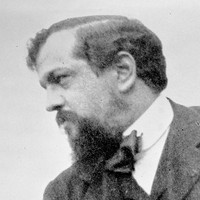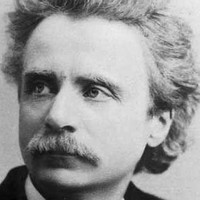Beethoven’s Pastoral Symphony with Gábor Takács-Nagy


 Watch Video
Watch Video
Claude Debussy had a typical start for a French composer, attending the Paris Conservatory and dabbling in the modern sounds of Richard Wagner, but his outlook expanded dramatically in the 1890s, setting him on a course to reshape the aesthetics of concert music. Influenced by sounds he heard at the 1889 World’s Fair in Paris (especially Javanese gamelan), and drawing on friendships with poets and painters, Debussy filtered his emerging ideas about symbols and impressions into a new musical language, one in which sounds were celebrated for their sensory appeal, independent of their harmonic function.
The once-controversial Debussy was an elder statesman of French music by 1909, when he joined the board of his alma mater at the invitation of the school’s director, Gabriel Fauré. The next year, Debussy supplied the conservatory’s clarinetists a final exam for the ages in the form of his Première rhapsodie, originally scored for clarinet and piano. As might be expected from a conservatory test piece, the clarinet is challenged to engage in more than just sweet, lyrical melodies as heard in the peaceful sway of the first section. A central scherzando (“joking”) passage, for instance, brings out the clarinet’s humorous side with staccato articulation and slurred chromatic runs.
Debussy published his own orchestral arrangement in 1911, using a lavish ensemble that included 11 winds, six brass players, and two harps. For this performance, The Saint Paul Chamber Orchestra teamed up with the Swedish Chamber Orchestra and Hong Kong Sinfonietta to commission a more intimate arrangement using an orchestra about half that size. Geoffrey Gordon, a composer renowned for his concertos and other orchestral scores that are frequently performed in the US and Europe, recreated the gossamer textures of Debussy’s orchestration, with string parts that are often divided into many delicate strands.
Aaron Grad ©2023
 Watch Video
Watch Video
Edvard Grieg was the first great Scandinavian composer. His studies in Leipzig grounded him in the Germanic tradition, but upon his return to his native Norway, he delved into local folk music and launched a national music academy. In 1876, he completed a collaboration with Norway’s most celebrated writer, Henrik Ibsen, providing incidental music for the play Peer Gynt which remains his most recognizable calling card. That same year, Grieg wrote a series of song settings on poems by Ibsen, including the song “Spillemaend” about a water spirit from Norwegian folklore.
That song melody became the basis of a string quartet that Grieg began the next year while staying among the fjords and forests of Norway’s gorgeous Hardanger district. During a sojourn that ended up lasting through the winter and on to the next summer, Grieg wrote the Quartet in G Minor, his first foray into that genre since a lost student work he attempted at 18.
As he wrote in a letter to a friend, his intention in the quartet was to strive toward “breadth, vigor, flight of imagination, and, above all, fullness of tone for the instruments for which it is written.” That fullness is on display in the opening introduction, powered by double-stops — drawing the bow across two strings simultaneously — and fat chords of three or four notes. (It suits this quartet’s character quite well to play with string sections instead of individual instruments, as in this performance.) The song theme appears in the introduction, and, after an agitated main theme to begin the fast body of the movement, a variant of the song melody serves as the contrasting second theme.
The slow movement takes the form of a Romanze, implying music of a songlike character, but that genial calm in the outer sections gets disturbed by another descent into minor-key angst in a central episode. The third movement is an Intermezzo full of stout declamations and themes that again relate to the song melody from the start of the quartet. To complete this work’s cyclical journey, the finale begins with a slow introduction on a related motif, and it brings back the slow tempo just before the end. In between is a fiery romp based on the saltarello, an Italian folk dance style full of vigorous leaps.
Aaron Grad ©2023
 Watch Video
Watch Video
The Sixth Symphony comes from the heart of Ludwig van Beethoven’s “middle” period, a phase when his encroaching deafness changed his relationship to composing and performing, and when the crystalline classicism of his early works gave way to a more focused and concentrated manner of writing. Rather than issuing flowing melodies, Beethoven’s quintessential works from this period build highly integrated forms out of compact, elemental materials.
The most iconic symphony from the “middle” period is Beethoven’s Fifth, but the same single-minded focus shows up in another work that was on his writing desk at the same time in 1808, the Sixth Symphony. The ingredient that made this work unlike any previous symphonies of Beethoven (or anyone else) was the extent to which storytelling was embedded within the formal structure. For the initial performance in 1808, Beethoven acknowledged the external inspiration in his full title: “Pastoral Symphony, or Recollections of Country Life: More an Expression of Feeling than Painting.”
Beethoven’s journals and letters reveal his love of nature, as when he wrote in 1810, “How delighted I will be to ramble for a while through the bushes, woods, under trees, through grass, and around rocks. No one can love the country as much as I do. For surely woods, trees, and rocks produce the echo that man desires to hear.” Recognizing and appreciating the natural world was a cornerstone of the Romantic ethos, and Beethoven’s Pastoral Symphony joined a common thread in music, art and literature of the early nineteenth century that rhapsodized on the beauty and grandeur of the natural world, with a reverence that was in no small part spiritual.
Just as the first four notes of the Fifth Symphony influence every measure of the opening movement, the Sixth Symphony builds an expansive essay out of a seemingly naïve theme. The first movement, characterized as the “Awakening of cheerful feelings upon arrival in the country,” enters bashfully, with four quiet measures that trail off. Fragments of this figure build slowly, basking in long stretches of unmoving harmony. The development section, often an opportunity for increased turbulence and activity, instead sinks deeper into a country calm, savoring each radiant chord change.
The second movement, “Scene at the Brook,” establishes a lapping triplet pulse under another mere wisp of melody. The idyllic scene ends with a trio of birdcalls from the woodwinds, representing a nightingale, quail and cuckoo. From here, the symphony diverges from a typical four-movement pattern. There is a Scherzo-like third movement, “Happy gathering of country folk,” but the rollicking dance music halts unresolved and is supplanted by the first staccato raindrops of the “Thunderstorm.” Fearful dissonances and thunderous timpani strikes make for a convincing tempest, until it trails off in one last upward patter from the flute. A clarinet takes over to establish the sing-song contours of the “Shepherds’ song; cheerful and thankful feelings after the storm.” This tune, at once humble and heroic, returns the symphony to its pastoral calm. Near the end, a hymn-like variant lends a deeper resonance to this sunny conclusion.
Aaron Grad ©2023
Get driving directions and find nearby parking.
Find dining options close to the venue.
View seating charts to find out where you'll be seating.
SPCO concerts are made possible by audience contributions.
For exclusive discounts, behind-the-scenes info, and more:
Sign up for our email club!
